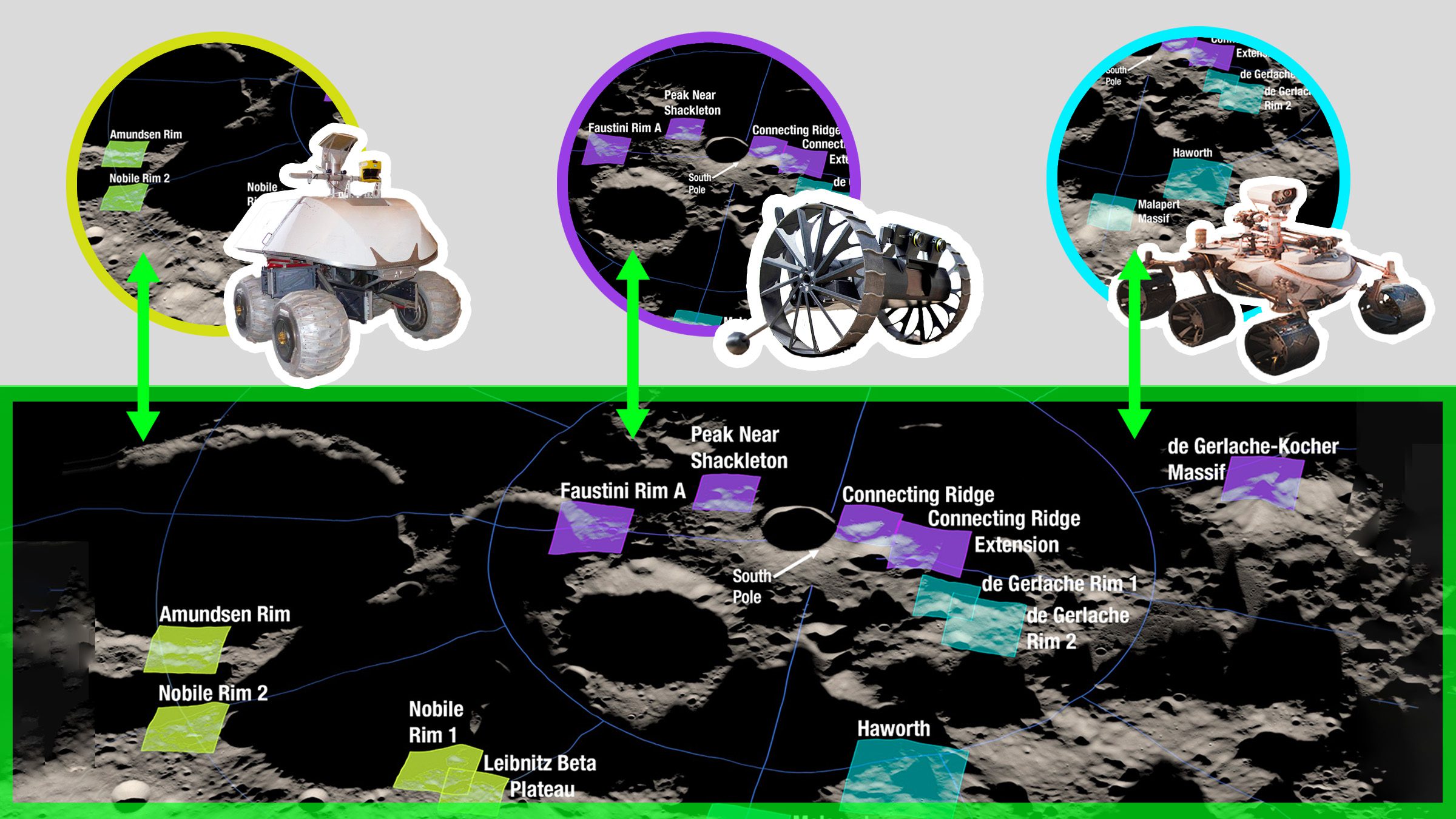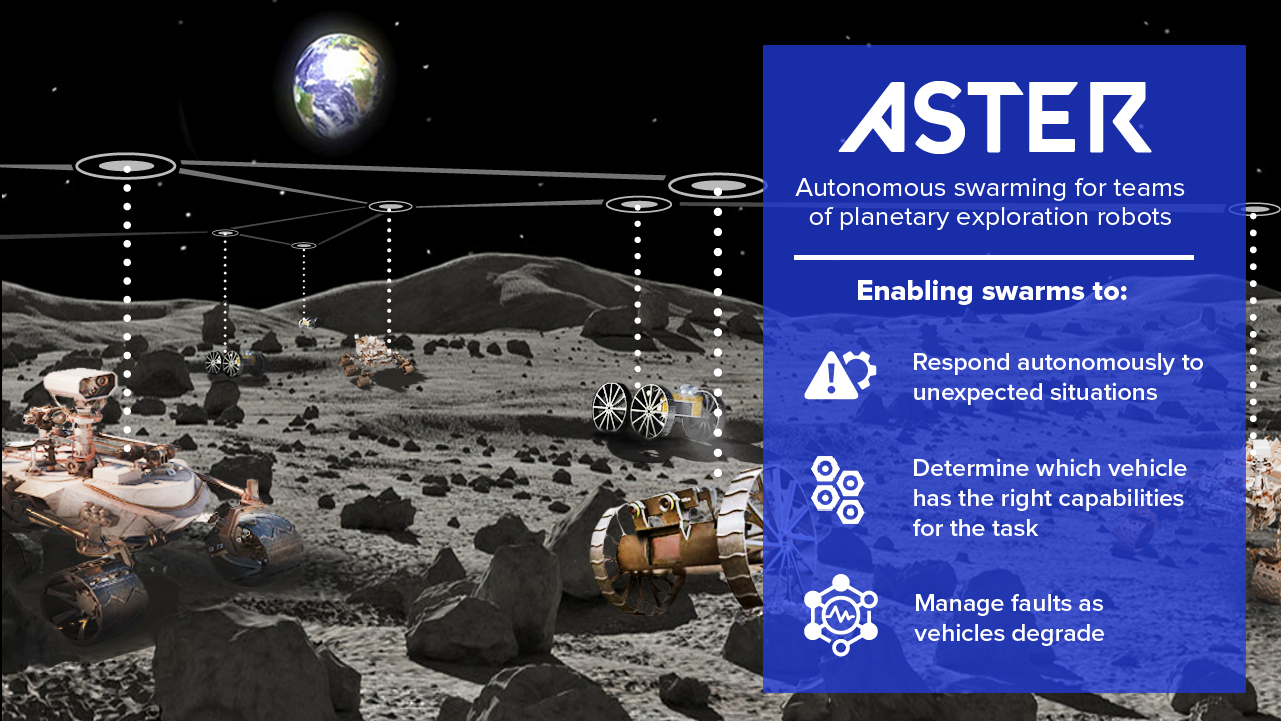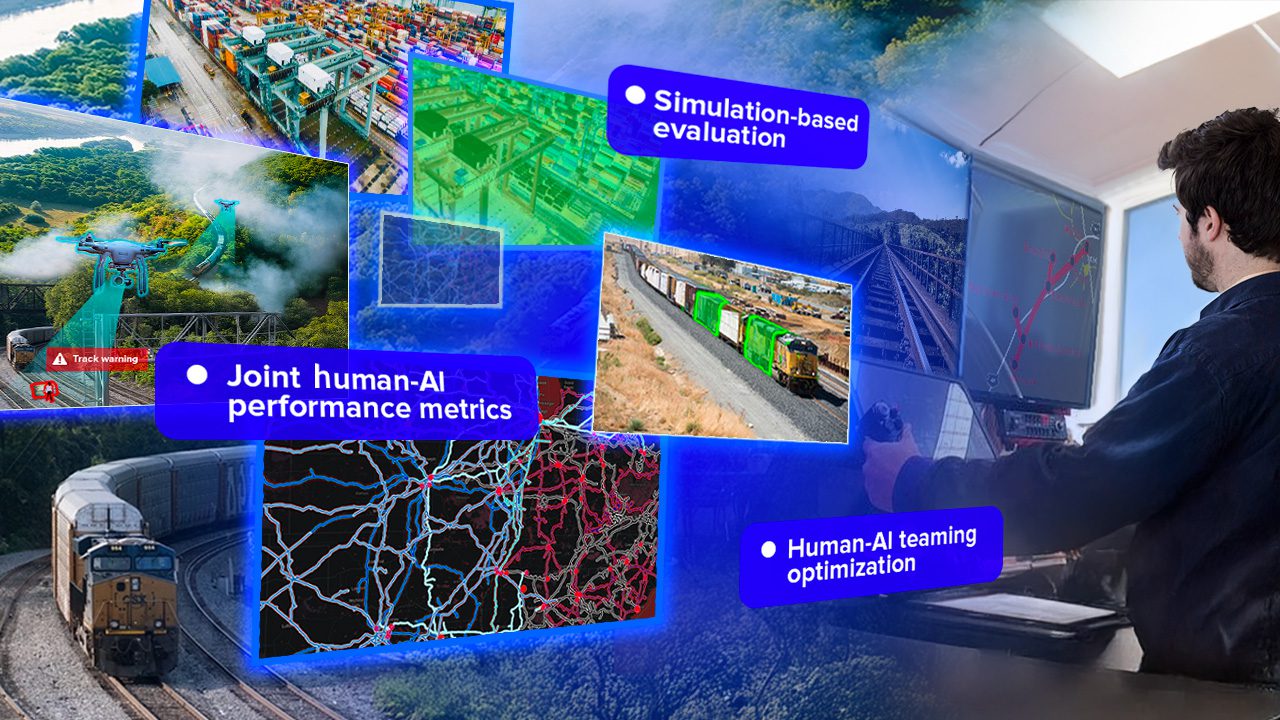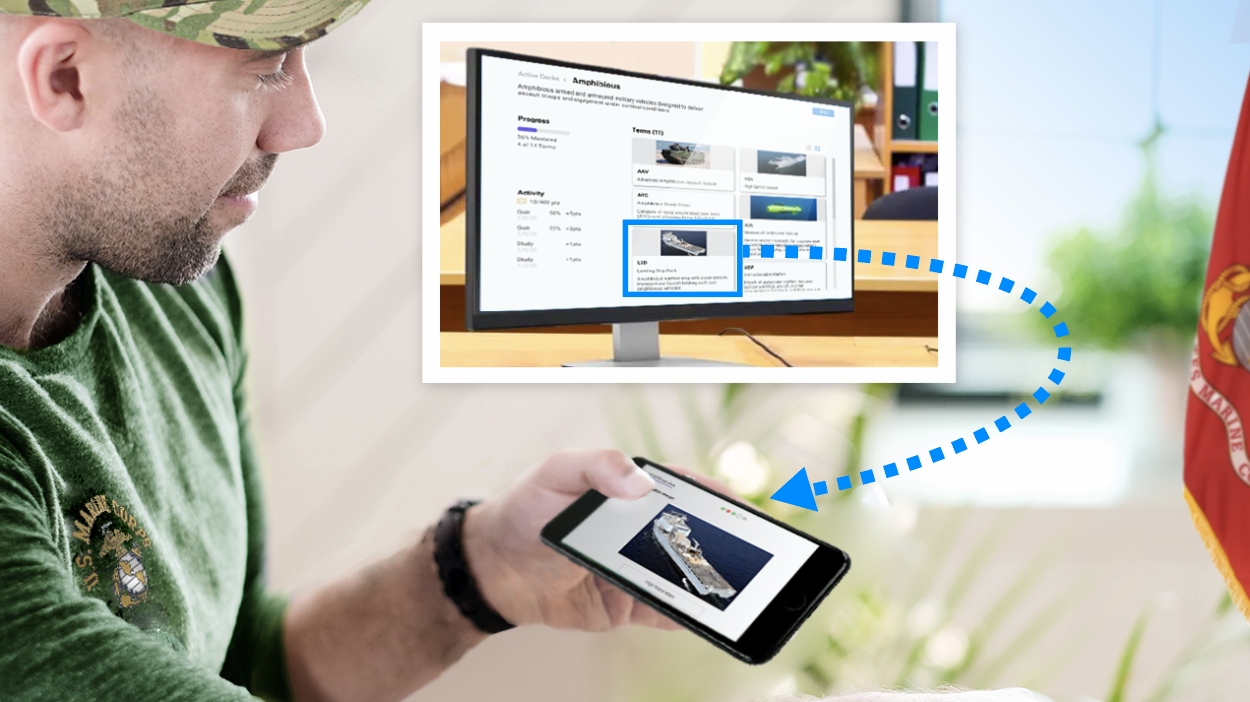Charles River Analytics, in collaboration with Worcester Polytechnic Institute (WPI), was awarded a $750,000 contract from NASA to enable robots to work together to explore the Moon. Under the Autonomous Swarming for Teams of Exploration Robots (ASTER) project, a team of Charles River scientists is developing artificial intelligence inspired by a psychological principle called “theory of mind,” which describes the ability to recognize differences between self and others.
Previously, the researchers completed a feasibility study and developed algorithms for autonomous task allocation as robots’ health and status change during their mission. Now, in Phase II, they are enhancing their work to explore challenging issues with task allocation so they can perfect these algorithms and test them on real-world robots. Their work builds on the Collaborative Autonomy Framework that Charles River Analytics has developed to compare and evaluate new ideas in multirobot task allocation and coordination.

The ability for robots to work together provides NASA with new ways of studying the lunar surface. With an individual robot, exploration is limited to one point at a single time and is constrained by the health of the robot and its sensors. With multiple robots, each robot can spread out to read signals at a distance, using tools such as ground-penetrating radar, or they can explore and collect samples across a broad area.
Heterogeneous robots introduce the idea that each robot may have a unique set of skills. For example, a fast robot with a sensor can find likely mineral deposits over a large area, and slow robots that are built for digging and collecting samples can follow up at specific locations. ASTER extends the notion of heterogeneity to include the health and status of robots, including factors such as a robot’s battery charge or degradation of its wheels or sensors. The algorithms that the team is developing consider all of these factors when deciding which robot is best suited to perform tasks that are required to support the mission.
Autonomous coordination is especially critical when the robots are far from human command and control centers, and communications systems are limited or delayed by long distances. This challenge will grow as NASA continues to explore the Moon, Mars, and beyond.
Charles River has partnered with Dr. Carlo Pinciroli of WPI’s Novel Engineering for Swarm Technologies (NEST) Lab for this effort.
“Robots can determine what to do next based on their beliefs about what the rest of the swarm is doing,” said Dr. Spencer Lynn, Senior Scientist at Charles River Analytics, and Principal Investigator on the ASTER effort.
“Collaborative autonomy in space opens the door to so many opportunities for exploring our solar system. With multiple small robots, we can send specialized robots that are equipped for different environments, and we can replace or add to robots that are already on the planets or moons,” says David Koelle, Director of Engineering, and Swarm Cognition Lead of ASTER.


Principal Investigator Spencer Lynn (left) and Swarm Cognition Lead David Koelle (right) are developing a collaborative autonomy framework to enable robot swarms to explore the Moon.
Contact us to learn more about ASTER and our other robotics and space capabilities.





